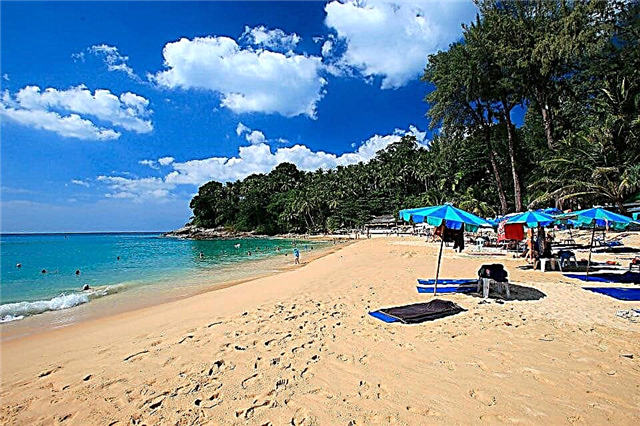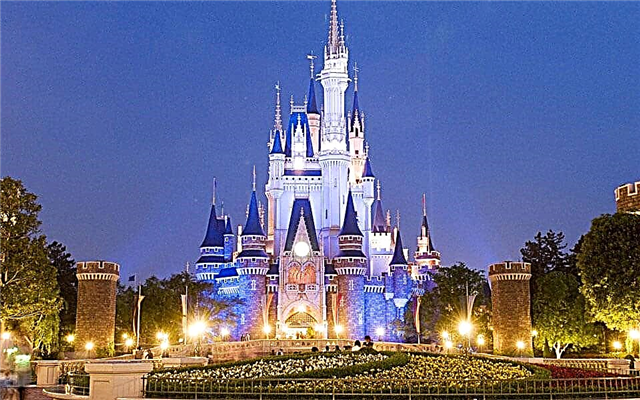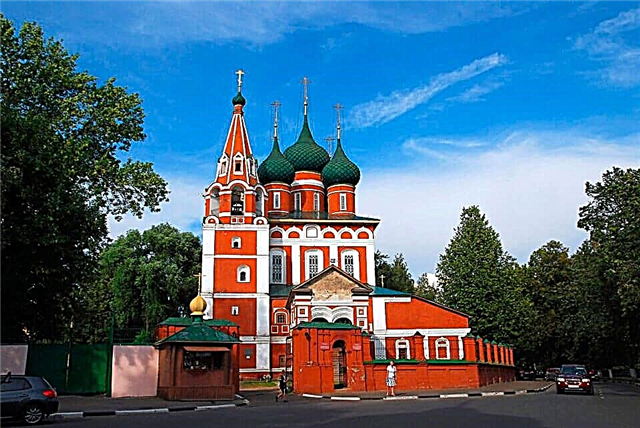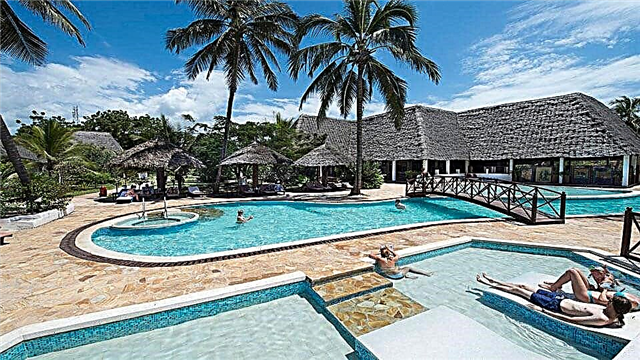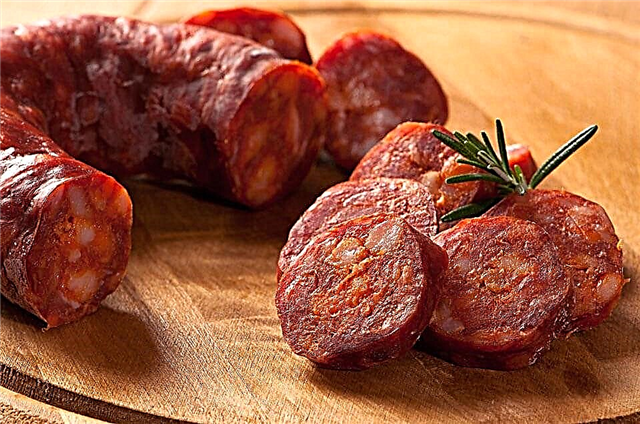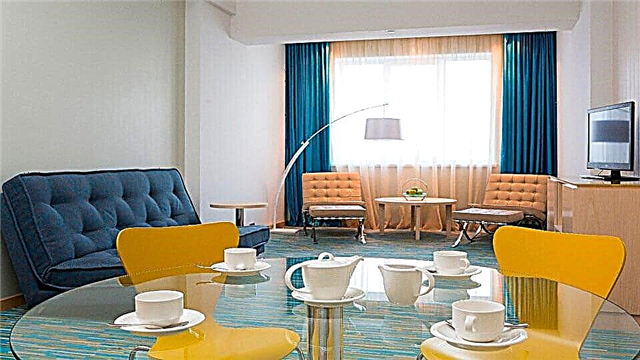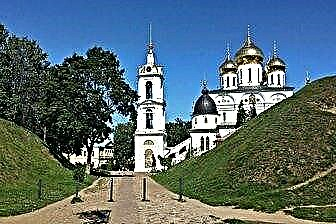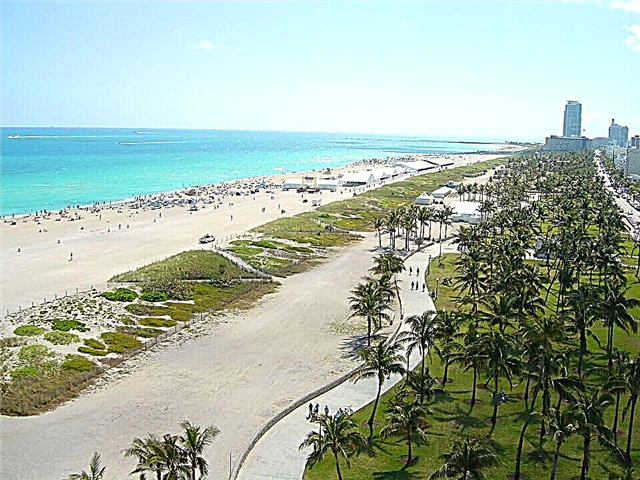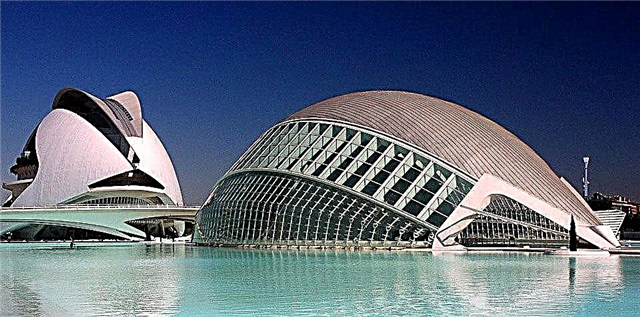Valencia's museums deserve a visit. They reflect all periods of the city's development: from the foundation to the last days. The expositions are being updated, you can come to the same center several times. When organizing presentations, the administration uses technical progress: events are held interactively. Children of all ages and their parents are sure to find something to their liking.
Prince Felipe Science Museum

It is the largest science museum in Europe. The area that it occupies is over 26,000 square meters. The design of the structure is interesting: the building looks like the body of a deep-sea fish and an alien ship at the same time. It is part of a complex called the City of Arts and Sciences. The expositions tell about the history of our planet from ancient times to the present day. The latest achievements of science are presented. All items on display are interactive, they allow you to see real pictures.
But that's not all. Visitors participate in quests that are equally interesting for children of all ages and their parents. In laboratories, physical and chemical experiments are carried out, which are always waiting for active participants in the process. And you can relax in the cinema hall, where films about the history of the planet Earth are shown. It is noteworthy that all exhibited items are allowed to be touched by hands: this is one of the conditions for participation in excursions. You can visit the exhibition from Monday to Sunday from 10 am to 9 pm.
Museum of Fine Arts

The museum is located in the Pius 5 palace. This building was built in the 16-17 centuries. And the foundations are admirable. They have been replenished for 250 years! Tourists can get acquainted with permanent and thematic exhibitions.
Here are:
- Paintings by Goya, Velazquez, Sorolla, Ribera, El Greco
- Sculptures
- Engravings, drawings
Surprisingly, there is a restaurant on the territory of the Museum. It serves national cuisine. Tired visitors can relax and enjoy the culinary delights. You can visit the exposition from Tuesday to Sunday from 10 am to 8 pm.
Museum of ceramics

The exhibition is located in a mansion that once belonged to the Dos Aguas family. It was built in the 15th century. This building is an architectural monument, so you should start exploring the ceramics exposition from the outside. In the 15th century, the merchants of the Rabassa clan were among the first wealthy people in the state. They made their initial capital from trading, and then supplemented them with interest from real estate transactions. They subsequently received the title of Marquis.
Such a family did not deny themselves anything, and in the 15th century they rebuilt a mansion in the Gothic style. It was a composition of 3 houses located around a patio. The building had a tower. But in the 18th century, the 3rd Marquis of Dos Aguas reconstructed the building. The building now has a quadrangular profile, with towers in the corners. The central portal is especially noteworthy: it is made in the late Baroque style. The facade was painted with frescoes, but they have not survived.
In the middle of the twentieth century, the Italian government bought the mansion and placed it in the State Museum of Ceramics. This national craft is able to tell about the history of the country's development and the customs of the people. The exposition has unique samples. The exhibition is complemented by interior items: furniture, tapestries, paintings, dishes and kitchen utensils. The doors are open for visitors from Tuesday to Saturday from 10 am to 2 pm.
Valencia History Museum

Tourists are attracted, first of all, by the unusual building. This is the former management of the reservoir, which supplied the city with drinking water. It was built in 1850. In 1998, the city authorities carried out the restoration of the premises and gave it to the place where temporary and permanent exhibitions are held. The combination of traditional and modern technologies helps visitors to immerse themselves in history more fully. The exhibitions are supplemented with interactive screens, demonstration of films on the required topic. Tourists do not just passively immerse themselves in the era: they participate in the events that are described on the stand.
The expositions cover certain periods of the city's history:
- Roman rule. Artifacts from 138 BC are on display here. NS. to 711 A.D.
- Conquest of the city by Muslims and Moorish rule. The storage units are dated from 711 to 1238.
- Medieval period. Items from 1238 to 1519 are on display here.
- Early Christianization of the country. The exhibits represent the period from 1519 to 1707.
- Belonging to the city of the Bourbon dynasty. Visitors explore the period from 1707 to 1833.
- Time of economic take-off. The exhibits are dated from 1833 to 1917.
- New story. The development of the city from 1917 to 1975 is presented.
- Recent history.
The premises are planned very rationally: some of them have the opportunity to receive guests and conduct thematic seminars, lectures and master classes. The doors of the center are open to visitors from 10 am to 7 pm from Tuesday to Sunday.
Museum IVAM - Institute of Contemporary Art

The Valencia Institute of Contemporary Art has an impressive permanent exhibition. It is spread over 2 floors and consists of 11,000 items.
Visitors can familiarize themselves with:
- Paintings by famous artists: Pablo Picasso, Julio Gonzalez and Joaquin Sorolla. These exhibitions are open for viewing throughout the year.
- Drawings, photographs, sculptures. These exhibitions are periodically changed and updated.
- Various planned activities. The staff of the center offers tourists themed events. Literary readings are held in the halls, lectures on artistic and scientific topics are organized.
- New works by Spanish authors. Valencian writers are given the opportunity to present their works.
- Retro films. Screenings are often organized in the cinema hall of the institute.
- Unique books and documents. The center has a library with a reading room. You can see rare editions there. The library funds exceed 47,000 items.
The Institute has a unique exhibit - a fragment of the fortress wall that once ran along the perimeter of the city. It was discovered during the construction of the building and organically integrated into the ensemble. The exposition is open from Tuesday to Sunday from 10 am to 7 pm.
Fallas Museum

This exposition was formed quite unexpectedly. In Valencia, an annual carnival is held, which ends with the burning of a monument - the fallas. These grotesque compositions are exhibited at all crossroads of the city, they ridicule the vices of modern society. Burning is carried out on the day of Saint Joseph: on the night of March 19, all fallas are burned. Moreover, this process has moral significance: society gets rid of its shortcomings.
But one monument still remains. This is decided by the townspeople by universal suffrage. Fallas, who escaped the fate of other sculptures, is transported to the museum. Therefore, any visitor who did not participate in the carnival can join the colorful event. It is symbolic that the exposition is located on the territory of the monastery not far from the City of Arts and Sciences. For tourists, the exhibition is open from Monday to Saturday from 10 am to 7 pm.
Archaeological Center Almoyna

This unique underground center allows visitors to literally experience Valencia's history:
- Having descended several tens of meters down, tourists plunge into the times of the founding of the city. Then he was called Valentia. Remains of houses, shops, the temple of Asclepius, and a bath are perfectly preserved.
- Subsequently (in 75 AD) the city was destroyed by Pompey. But Valencia was rebuilt a century later.Stone-paved roads, the court chamber, the central square with fragments of columns remind of this period of the city's life.
- The Christianization period left the baptismal font, the altar of the Church of St. Vincent, who is considered the patron saint of the city.
- Moorish rule brought in the remains of a cobbled courtyard with a fountain in the center.
After the expulsion of Muslims and the return of Christians, a building was erected on the site of the modern center, which was named "La Almoina". It was used as a shelter for the poorest people.
Museum of the Age of Enlightenment and Modernism MuVIM
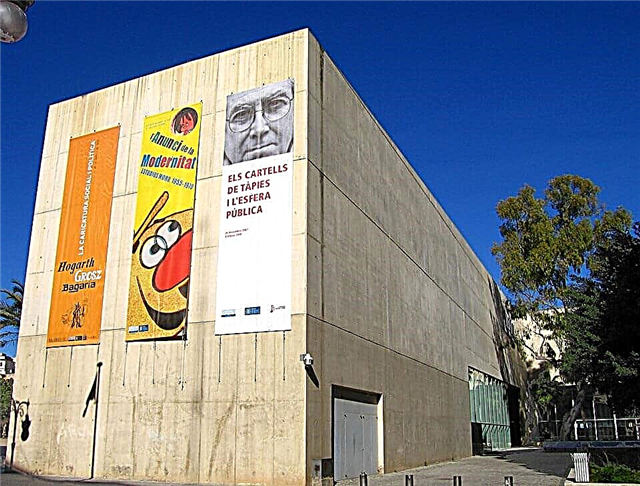
MuVIM is a center created for those who think about how to think. The building itself encourages thoughtfulness: it is uncomfortable, the floor is gray, concrete, the walls are practically untreated. These modernist ideas belong to the author of the project - Guiermo Vasquez Consuega. According to his idea, nothing should set the visitor to perception with the "+" sign. The visitor must understand that thinking is a complex process.
The central place in the exposition is given to what is now called advertising. The development of the world is reflected through comics, films, photographs - what the media describe. A journey through the eras is not organized by an ordinary guide: the visitors are accompanied by an actor dressed in a costume of the corresponding period. The tourist will look through the telescope of Galileo Galilei, listen to the philosophical disputes of the monks of the Middle Ages, visit the secular salon of the 17th century, and imbued with the revolutionary spirit of Paris.
The most significant events of the 20th century are also reflected in the center. After such an eventful journey, tourists begin to perceive in a different way the well-known historical events. MuVIM is an interesting center for children and adults. MuVIM is open to the public from Tuesday to Saturday from 10 am to 2 pm. Then it opens from 4 pm to 8 pm.
Natural History Museum at the University of Valencia

There is ongoing research work. Professors and students bring invaluable artifacts from scientific expeditions. For many years they were simply kept in the storerooms of the institution, but now the items are on display for everyone to see. The collection represents several branches of science: paleontology, geology, zoology and botany. The university administration spent a lot of effort to ensure the required preservation of the finds, but now all conditions have been created on the Burhasot campus not only for the maintenance of the collection, but also for its unhindered examination.
Visitors will see:
- A giant meteorite formed 4,600,000,000 years ago. Its weight is over 30 kg.
- Skeletons of prehistoric animals discovered during expeditions.
- Imprints left by a giant prehistoric turtle. They were found during work in the municipality of Domenio.
- Fragments of the skeleton of a prehistoric man who lived in the territory of modern Spain.
- Stuffed rare animals and extinct species.
- The skeleton of a flying raptor is a pterodactyl.
The exhibition covers an area of over 900 square meters. Not without modern technology. Visitors at the entrance are given glasses that simulate virtual reality. This is how sightseers travel back in time.
Museum of Prehistory and Ethnology

Here are artifacts describing the period of emergence and development of Homo sapiens. Visitors have the opportunity to explore:
- Ancient dishes, kitchen utensils, furniture.
- The first coins, decorations. Visitors will see a full exposition of the history of money in Valencia and Spain.
- Agricultural implements.
- The reconstructed peasant hut is of particular interest.
All storage units were found in the province of Valencia. The exposition is complete, it is interesting to study the history of the life of the people inhabiting this area. But the quality of the presented artifacts will be especially appreciated by anthropologists and people interested in anthropology and ethnography. The exhibits are divided into periods, the selection is complete and wide.
War museum

In the center, all exhibitions are dedicated to the Spanish army. They are located in 22 rooms. Here the visitor is invited to get acquainted with:
- Firearms and cold weapons, ammunition, uniforms, awards.
- Pictures painted on military themes.
- Miniatures depicting battles important for Spain.
Not a single period of the country's history has been ignored. Visitors get acquainted with the panoramas of the battles of the Napoleonic wars, in which the Spaniards participated, with an exposition dedicated to the period of Franco's reign. There is a separate stand for artifacts of the Second World War. The study of the displayed storage units will be interesting even for a visitor far from the army.
Patriarch Museum

The complex of buildings that houses the Patriarch's Museum was rebuilt by Juan de Ribera in the 16th century. The original assignment was a seminary for the training of priests during the counter-reformation. Ribera was an ambiguous historical figure: he simultaneously held the secular title of Viceroy, the spiritual title of Archbishop of Valencia and Patriarch of Antioch. Ribera was fond of collecting. Gradually, many art objects accumulated in the seminary. These were mainly paintings and sculptures.
Subsequently, the exposition became public, and the center was named in honor of the Patriarch. Tourists can see the paintings of El Greco, Moralis, Ribalta. There are also church relics: a boxwood cross, made on Mount Athos, and the last manuscript of Thomas More, which he wrote in prison before his execution.
Tin Soldier Museum

The first ones visited the exposition in 2017. It is based on a private collection of tin soldiers owned by lvaro Hoger Jimenez. Now the exhibition consists of 95,000 items. The creator of the museum not only placed the figurines on a pedestal: he introduced the tourist to see a miniature theater of military operations.
Here you can see:
- Battle of Austerlitz. The armies of France, Russia and Austria are present on the battlefield. The soldiers are in battle formation, in the distance you can see the carts, food attendants, ambulance tents.
- The legendary battle of Gaugamela, which students read about in history lessons. The armies of Alexander the Great and Darius 3 confront each other.
- Large-scale installation of the Battle of Almansa. It is attended by 9,000 soldiers.
- Defense of a medieval fortress. The picture of the battle is clearly presented here.
- Parades of various armies of the world. In this picture, it is easy to see the smallest details of the uniforms of soldiers and officers.
- Hunting scenes of primitive man, ritual dances of the Indians.
- The battle of the primitive lizards with each other.
- Pictures of the peaceful life of the military. It depicts cities with shops, transport, civilians.
To give the visitor an idea that figurine making is a painstaking business, there is a stand with tools. With the help of quite ordinary objects, little soldiers are created. Those interested can buy collectible soldiers in the shop at the museum. But the price of the products is quite high. The exhibition awaits visitors from Wednesday to Sunday from 10 am to 2 pm and from 4 pm to 7 pm from September to June. In July and August - from 10 am to 2 pm and from 3 pm to 8 pm.
Bombas Gens Cultural Center

The center is located on the territory of a plant that produced hydraulic pumps. After reconstruction, the premises of the enterprise are used for:
- conducting master classes, lectures
- photo exhibitions reflecting the history of the plant and Valencia
- exhibitions of paintings by contemporary artists
It is noteworthy that the architecture of the enterprise has been preserved as much as possible. Visitors are immersed in the factory world of the last century. The highlight of the center is the trendy restaurant with specialties from the chef.
Bankaya Cultural Center

The expositions are held in two buildings. There are permanent and temporary exhibitions. The central hall is given over to the paintings of Joaquin Sorolla. The rest of the exhibitions change. A quick inspection will take 2-3 hours.The building itself is interesting: three floors are decorated with baroque elements. It is truly a cultural center: the owners organize lectures, presentations and seminars. But it is forbidden to take pictures inside. The impressions from what they saw are ambiguous: some tourists are unhappy, others like it. It all depends on tastes and preferences.
The center is open from 9 am to 2 pm and from 4 pm to 9 pm.
Lladro Porcelain Factory

Today Llardo is a world famous porcelain brand. And in 1953, the 3 brothers started the usual production of figurines. The workshop was at home, a kitchen stove was used for firing. The factory is now operating at full capacity, with a shop and a museum. The premises are small, so no more than 10 people can visit the exhibition at the same time. The tour begins with a film screening. The screen describes the stages of creating a workshop and the features of the technological process. A feature of production is that mechanization and automation are minimal.
Most of the operations are manual labor. This achieves the uniqueness of the figures: it will not be possible to find absolutely identical ones. Before the release of the next series, the council of the factory reviews the drawings, which it approves. The size of the batch is agreed immediately. Then a model is made, a mold for casting is created on it. This is where the mechanization of production ends. The porcelain mass is poured into a mold. After hardening, the parts are taken out, connected with a porcelain mass, and polished.
Small parts are made separately: this is a painstaking job. The painting is done by hand. The paints are almost transparent, after firing they appear. You can recognize Llardo figurines by the abundance of flowers. Moreover, each petal is made by hand from porcelain dough rolled into a thin layer. Then the buds are connected and painted. The finished bouquet is attached to the required place.
After the series is over, the casting molds are destroyed. Therefore, it is impossible to produce an identical figure later. The value of the collection is increasing. This is one of the features of the Llardo brand. After the tour, tourists are encouraged to visit a shop selling product samples. A special feature of the Llardo store: if a figurine is broken within 1 year after purchase, the company replaces it with a similar one for free. The porcelain factory can only be visited as part of an organized group. You can order a tour on the official website. The total price includes transfer from the hotel.
Bullfighting museum

This museum appeared at the beginning of the last century. The date of its creation is 1929. It is based on the private collections of Luis Peyro and the bullfighter José Badil. The exposition is located near the arena where the bullfights were held. Tourists can walk around it and feel the full intensity of the passions that raged here. The halls contain all the items that are used in the bullfight. And so that the inexperienced tourist does not have any confusion, an audio guide will help. He will name all the items and artifacts on display.
One of the halls represents the entire bullfighting ceremony. There is a bull in the center, ready to fight a man. The whole situation sets you up for a serious battle. The bullfighter is armed with knowledge of the habits of bulls, has excellent physical training, but he must not only defeat the animal, but also present the audience with a bright and memorable show.
Audio recording allows you to immerse yourself in the world of bullfighting as a whole, to feel the soul of this action. You can visit the museum from March 1 to August 31 from 10 am to 7 pm from Tuesday to Saturday. From September 1 to February 28 - from 10 am to 6 pm from Tuesday to Saturday.


